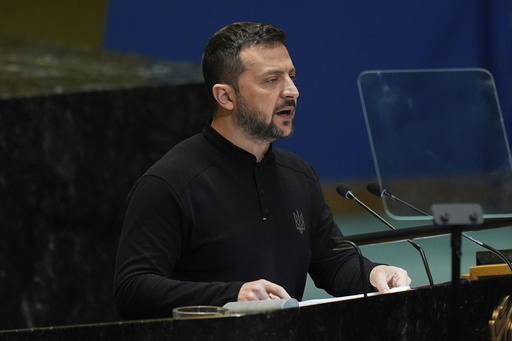On the occasion of the third year since Russia’s incursion into Ukraine, the United Nations General Assembly is scheduled to cast votes on two conflicting resolutions. One, backed by European nations, advocates for the immediate withdrawal of Russian troops from Ukrainian territory, while the other, proposed by the United States, seeks a rapid cessation of hostilities without a direct reference to Russia’s actions.
According to undisclosed sources, the U.S. actively encouraged Ukraine to withdraw its nonbinding resolution in favor of the American proposal; however, Ukraine opted to proceed with its original resolution, which will now be subject to a vote among the assembly of 193 nations. These discussions have highlighted underlying tensions between Ukraine and the U.S., particularly following President Donald Trump’s unexpected engagement with Russia aimed at expediting a resolution to the conflict. This situation has created a rift in the transatlantic alliance, especially as European leaders have expressed dissatisfaction over their exclusion from preliminary discussions last week.
Furthermore, Trump’s escalating rhetoric has led him to label Ukrainian President Volodymyr Zelenskyy as a “dictator,” incorrectly alleging that Ukraine instigated the war, and cautioning that Zelenskyy must act quickly to negotiate an end to the conflict or risk losing his nation. In response, Zelenskyy remarked that Trump appeared to be entrenched in a “disinformation space” created by Russia.
After these exchanges, not only did the Trump administration fail to endorse Ukraine’s resolution at the U.N., but it also introduced its own version last minute, urging allies to support this alternative proposal. This development coincides with Trump’s planned meeting with French President Emmanuel Macron in Washington on the same day.
Additionally, the U.S. is pushing for its proposal to be voted on in the more influential U.N. Security Council, which China, occupying the council presidency this month, has slated for later Monday.
The General Assembly has taken on increased importance regarding the Ukraine situation, primarily because the 15-member Security Council has been hamstrung by Russia’s veto authority. Unlike the Security Council’s decisions, which are legally binding, resolutions passed in the General Assembly carry no binding force. Nonetheless, votes in the assembly act as a significant indicator of global sentiment on the issue.
Since Russian forces invaded Ukraine on February 24, 2022, the assembly has adopted several resolutions condemning the invasion and urging the withdrawal of Russian military presence. Observers will closely monitor the votes on the rival resolutions to gauge any shifts in international support and evaluate the backing for Trump’s initiative to seek an end to the hostilities.
The succinct U.S. draft acknowledges the “tragic loss of life” resulting from the ongoing conflict while calling for a rapid resolution and sustainable peace. However, it notably omits any mention of Russia’s invasion.
In contrast, Ukraine’s resolution explicitly addresses “the full-scale invasion of Ukraine by the Russian Federation” and emphasizes the necessity of implementing all prior assembly resolutions related to the aggression against Ukraine. It underscores the assembly’s demands for Russia to “immediately, completely, and unconditionally withdraw all military forces” from Ukrainian territory.
The Ukrainian proposal highlights concerns about the participation of North Korean troops alongside Russian forces, considering this could further escalate the conflict. It reiterates the assembly’s commitment to Ukraine’s sovereignty, stating that any territorial acquisition resulting from the threat or use of force cannot be recognized as legitimate. The resolution calls for the de-escalation of violence, an immediate halt to hostilities, and emphasizes the urgent necessity of resolving the war within the current year.
